|
Our Hakka gongfu training requires the carrying of heavyweights upon our backs. This represents the hilly terrain the Hakka people lived within throughout the New Territories, Hong Kong. Hakka Clan villages, especially by the 20th century, were often re-constructed upon the top of various hills situated in prominent good (feng shui) positions. The bones must be kept strong for building good health and ensuring longevity. Strong bones allow the bodyweight to drop down through the centre of the bone-marrow into the floor (creating a strong 'root') - and facilitates the rebounding force which is distributed (throughout the skeletal-system) to the striking part of the anatomy - be it a hand, foot, elbow, knee, fore-head or torso, etc. The Hakka people moved into the Guangdong area (that became the 'New Territories' under the British in the 1890s) in the mid-1600s - following the Manchurian invasion of China (which established the foreign 'Qing Dynasty' during 1644 CE). Our 'Chan' (陳) Clan (pronounced 'Chin' in the Hakka language and 'Chan' in the Cantonese language) originally settled at the base of a hill near the coast in the Sai Kung area. I think we probably originated somewhere in Henan province (like many other Hakka Clans that I have investigated). Younger people often carried older relatives on their backs (as part of the required filial piety) up and down the hills - to and from various areas. Chinese families reflect the government and vice versa. One reflects the other whilst the notion of Confucian 'respect' permeates the entire structure. This is true regardless of political system, era, religion or cultural orientation. Many Daoists and Buddhists are Vegetarian - because they respect animals and the environment. When working as farmers - Hakka people carried tools, goods and the products of harvests on their backs between long hours working in the rice fields with the Water Buffalos. The continuous repetition of hand and foot movements - and the standing postures for long hours in the wind and rain - condition the mind and body for genuine Hakka gongfu training. Although there is an 'Iron Ox' gongfu Style (different to our own) - the spirit of the Ox pervades all aspects of the Hakka gongfu styles! Even so, our Hakka Style embodies the spirit of the Bear! We can fighting crouching low - or stand high giving the impression that we are bigger than we actually are! Our developed musculature is like the Ox and the Bear in that it is large, rounded and tough! We can take a beating and still manifest our gongfu Style with ease! We do not go quietly into that dark night! The above video shows Hakka people de-husking rise - with the standing person practicing 'Free Stance, rootedness and knee-striking, etc, and the crouching person showing a low Horse Stance and position for 'Squat-Kicking', etc, whilst demonstrating dextrous hand movements often found in gongfu Forms. Of course, not all Hakka Styles are the same and there is much diversity throughout the Name Clans. Our Chan gongfu is Military-related and can be traced to the Qin Dynasty (221–206 BCE). I think there used to be a State Gongfu Manual (since lost) issued by the Qin Dynasty as part of the process of turning every village, town and city into a 'Barracks'. Guiding the ploughs through the water and mud at the back of the Water Buffalos reflected the leg, arm and torso positions found within the Hakka gongfu. How the Hakka farmers stood still, stepped forward and back - side to side, tensed and relaxed their muscles, used their eyes and ears, and produced power and learned to give-way - all manifested in the various Hakka gongfu Styles. On Occasion, the Ox is given the day-off and the local people take to 'pulling the plough'! Our Hakka Gongfu is 'Longfist' based. Whereas many Hakka Clans - following our defeat at the end of the Punti-Hakka Clan Wars (1854-1867 CE) - Hakka people were ethnically cleansed into small areas of Guangdong province. Around 20 million people had died in this terrible war (which included the separate but related Taiping Rebellion - a Hakka-led war - fought for different reasons). The original 'Northern' Hakka Styles were persecuted and viewed as the vehicle through which the Hakka people had made war in the South of China (the area they had migrated into). The Hakka are patriotic Han Chinese migrants who fled the foreign invasion of Northern China - but who were not wanted or welcome within Southern China. Since the 1949 Revolution - things are very different today in China - as Hakka and non-Hakka now live side by side in harmony. When the various Hakka Clans 'shortened' the arm and leg movements of their gongfu Styles - to make these arts seem 'Cantonese' in origin - our Hakka Clan lived in a relatively remote area of South East Guangdong province and refused to do this. We practiced our 'Northern' Longfist martial arts in isolation and hid our gongfu in Temples grounds, behind walls and by practicing at night. Master Chan Tin Sang (1924-1993) fought and killed Imperial Japanese soldiers in the New Territories between 1941-1945 using our Hakka gongfu. Around 10,000 Hakka men, women and children were killed in this war fighting the modern Japanese soldiers using bare-hands and feet - and traditional weaponry. Many of our relatives were killed during this time. Master Chan Tin Sang came to the UK in 1956 - as a British Subject - to work for a better life, not because China is a bad place (it is not), but because life in the New Territories under British rule was continuously impoverished. Master Chan Tin Sang worked hard for 10-years before he earned enough money to bring his wife and two daughters to the UK (in 1966) - also as British Subjects. My Chinese relatives were NOT economic migrants, Asylum Seekers, or Refugees. My Chinese relatives do not follow Cults and are free-thinking individuals who are proud to be 'British' whilst supporting Mainland China's right to self-determinate - just like any Western country.
0 Comments
The funny thing is that component movements of the Islamic martial art of 'Chaquan' looks identical to our 'Hakka' Longfist Style - even down to the applications - but Longfist is generic and certainly not rare! It comprises hundreds (or thousands) of Northern Styles and is common-place (it has even penetrated a number of Southern Styles). We all approach these movements from our different lineage perspectives - but all traditions use the 'external', 'Internal' and 'Integrated' aspects of ancient Chinese science. My research suggests that the Qin Dynasty (221-206 BCE) instigated a country-wide martial culture - probably through a specially constructed manual comprised of illustrations and basic directions. As the Qin Emperor expanded the model of the Qin State (originally situated in Northwest China) across the whole of the conquered territories of what is today considered 'China' (which excluded at the time the swamp-infested area of what is now Fujian province) - this 'unity' of culture spread over a massive geographical area and converted every village into a military barracks - and ordered that every local man, women and child became a 'soldier' serving the Qin State whilst having to train in a standardised martial art (both 'armed' and 'unarmed'). This makes Longfist over two-thousand years old - and pre-existing the arrival of Muslims in China by about 1,200 years! The Arab merchants constructed their Chaquan version of Longfist from what they saw around them in the areas of China they had settled within (possibly acquired from the families of the Chinese women they married). Of course, this specialised Longfist was then taught to non-Muslim Chinese people (for various reasons) over-time - so that today Chaquan is practiced by millions of ethnic Han people - as well as Hui Chinese-Muslims. Hakka gongfu is typically 'Confucian' with Buddhist and Daoist overtones. There are theories, however, that suggest the 'Qin' and 'Han' Dynasties may have been 'Hakka' - that is founded by displaced peoples who originally lived on the edges of geographical Northern China (before migrating Southward) and which had developed cultures that mixed 'Han' and 'non-Han' (Barbarian) cultural elements together. This history is disputed, but certainly DNA studies have linked (modern) Hakka women living within South China with (Evenk) women living today in Siberia. Certainly, our Spear Forms were originally practiced (in-part) whilst riding a Steppe pony and gripping and steering the animal with the legs - whilst keeping the hands free to wield the spear from one side to the other without striking the animal's head. Later, when ponies were nolonger available - the 'Horse Stance' was developed to take their place in training. The 'Horse Stance' used to prepare the practitioner by building the lower-body strength for riding a Steppe pony through 'holding' the stance for long periods of time. Today, most practitioners use this method for strength-building - but have no knowledge of the historical development behind its structure.
Translator’s Note: This version of history is different from the 1989 declaration in China that ‘Ryu Ryu Ko’ (the ‘teacher’ of Higaonna Kanryo) was in fact ‘Xie Chongxiang’ (謝崇祥) [1852-1930] - known locally as ‘Ru Ru Ge’, ‘Ru Ru Shi’ and ‘Ru Shi’, etc. In many texts, this well-known White Crane Fist teacher is known as ‘Xie Ru Ru’ (谢如如). The ‘International Okinawa Goju Ryu Karate-Do Federation’ (IOGKF) - formerly led by Higaonna Morio (who has recently rescinded control) – does not accept this research. This is because this organisation has a different version of historical events – which I present below in English translation. For those fully aware and accepting of the ‘Xie Chongxiang’ identification – the following will explain ’why’ the IOGKF does not adhere to this narrative. From a purely historical perspective, the discrepancies of interpretation are interesting. An important contextual point to bear in mind is that by 1915 - it would have been thirty-four years since Higaonna Kanryo left China in 1881 - with Ryo Ryo Ko presumably ‘dying’ not long after this date. The glaring contradiction is that in 1915 - Miyagi Chojun (whilst visiting Fuzhou) - was shown the 'Tomb' of 'Ryu Ryu Ko' whilst 'Xie Chongxiang' was still alive! ACW (30.9.2022) During May 1915, Miyagi Chojun and Nakamoto Hideyoshi (仲本英炤) - the latter also being a prominent Okinawan martial artist – travelled together to the Fuzhou area of China’s Fujian province! By this time – the Grand Master Ryo Ryo Ko – had long been deceased. As the ‘Chief Disciple’ of Higaonna Kanryo, however, Miyagi Chojun attempted to gain access to the surviving family and martial lineage descendants of ‘Master Liu’ (刘氏 - Liu Shi). This is described as Miyagi Chojun attempting to successfully ‘gain entry’ to the ‘Liu Gate’ (师门 - Liu Men) - despite Master Liu having been deceased for quite some time. Miyagi Chojun, however, discovered that most of the members of the ‘Liu’ family (and his martial ‘lineage’ disciples) had moved out of the Fuzhou area – due to warfare. Those still living in the area were elderly people of the same generation as Higaonna Kanryo. The Senior (elderly) ‘Liu’ disciple still remaining (and who could remember Higaonna Kanryo) led Miyagi Chojun (and his group) to the Tomb (墓 - Mu) of ‘Master Liu’ (ルールーコウ- Ryū Ryū Ko) so that the ritual of Confucian ‘respect’ (拜祭 - Bai Ji) could be correctly performed. After this duty was completed – Miyagi Chojun was then taken to the place where Higaonna Kanryo used to practice martial arts. During October 1915, Higaonna Kanryo gathered his students and disciples together in Okinawa and formally announced that ‘Miyagi Chojun’ was chosen as his official ‘lineage’ descendent and successor! Miyagi Chojun spent thirteen-years training under Master Higaonna Kanryo’s guidance (1902-1915). As the teaching of Higaonna Kanryo was so strict – Miyagi Chojun was the only student to train for such a long and sustained period of time! This made Miyagi Chojun the ‘Chief’ disciple amongst the many that trained – and the ‘Leading’ disciple of the Higaonna Naha-Te tradition! Miyagi Chojun remained entirely loyal to Higaonna Kanryo until his passing – and then preserved his memory without hesitation. During 1916, as the ‘lineage’ inheritor of Higaonna Kanryo – Miyagi Chojun experienced his first occasion of ‘hosting’ visitors from Fuzhou! These people were Chinese martial artists visiting Okinawa to pay their respect to the ‘lineage’ of Higaonna Kanryo (which had been transmitted from Fuzhou to Ryukyu). As ‘lineage’ inheritor – the respect expressed for Higaonna Kanryo (when not directed to his Tomb or living Higaonna family members) was directed toward Miyagi Chojun himself – who was responsible for all the arrangements of these visits. On July 2nd, 1917, Miyagi Chojun (accompanied by ‘Wu Xiangui’ [吳賢貴] as translator), left Okinawa to visit Fuzhou to carry-out further research into the local martial arts practiced there. This included the ‘六机手’ (Liu Ju Shou) or ‘Rokuki’ (‘Six Weaving Hands’) technique - which later evolved into the ‘Tensho’ (転掌) Kata – translating as ‘turning’, ‘evading’ or ‘entwining’ - ‘hands’. Miyagi Chojun also began to study the Chinese manual entitled ‘武备志’ (Wu Bei Zhi) or ‘Military Preparation Record’ at this time. He also started to develop various patterns of martial movements to assist students in their daily practice. Chinese Language Source: 作者:猫爷习 https://www.bilibili.com/read/cv1652712/ 出处:bilibili
宫城长顺先生生平介绍(转载) 1915年5月,宫城长顺先生与仲本英炤氏前往福州,以首席弟子的身份福州拜见刘氏师门后人。在福州宫城长顺先生发现刘氏门人因战乱大多已迁离福州,唯独留 下几位与东恩纳宽量先生同辈份的上年人。门人领着宫城长顺先生一行人去到刘氏( ルールーコウ,Ryū RyūKo)之墓拜祭以及去昔日东恩纳宽量先生习武之旧址。 1915年10月,東恩纳寛量先生临终前向门下学生正式宣布宫城长顺先生为他的继承者。宫城长顺先生在东恩纳宽量先生门下一共十三年,直到东恩纳宽量先生过世为止,是东恩纳宽量先生门下学武时间最久的弟子也是東恩纳寛量先生的首席弟子。 其师过世后,1916年里宫城长顺在冲绳正式以继承人的身份首次接待了来访的福州的武术家。1917年7月2日,宫城长顺先生带着吳賢貴氏作为翻译回福州去视察研究当地武术。包括对六机手,武备志等的研究在此事开始。大概此时他也开始设计练习时的预备运动(准备运动)。 Within the Chinese language encyclopaedias, the clothing worn by ‘Karate-Do’ practitioners is described as being the attire required when cultivating the ‘Dao’ (道) or ‘Way’. During the era of the Ryukyu Kingdom, there are no historical records which support the idea that the white ‘gi’ clothing was worn by Karate-Do practitioners, or any strata of Ryukyu society for other types of activity. Within photographs taken before the Pacific War (1941-1945), most martial artists practice karate with the upper body being bear. In the book entitled ‘Fist Law – Brief Introduction’ (拳法概说 - Quan Fa Gai Shou) published in 1929, Chōtoku Kiyan (喜屋武朝德) states that the reason for training with the upper-body uncovered is to toughen the skin and the general externality of the body. When the Japanese Crown Prince Hirohito visited Okinawa in 1921, however, a demonstration of martial arts was arranged for him in the main hall of Shuri Castle. This was overssen by Funakoshi Gichin (aka ‘Rong Yiren’ [容宜仁]) who insisted that all those participating should wear a white shirt whilst in the presence of royalty (out of respect)! The white ‘gi’ which is commonly worn today when practicing Karate-Do originates from the clothing worn in the Kodokan during 1922 by Funakoshi Gichin when demonstrating Karate-Do on the Japanese Mainland. He ordered special White cotton cloth from the ‘Kanda’ (神田) area (famous for its ancient Shinto Shrines) - and hand-sewed a Karate-Do ‘gi’ using the general design of the training outfit worn by practitioners of Judo! This is the earliest recorded Karate-Do uniform in the historical literature. During 1934, in the magazine entitled ‘Empty Hand Research and Study’ (空手研究 - Kong Shou Yan Jiu) an advertisement appeared offering a pre-made Karate-Do uniform for sale! These products started selling in the early Showa period. As Karate-Do and Judo are very different martial arts that place different stresses and strains upon the material – the two types of ‘gi’ used for these activities has generally diversified into very different directions. The Japanese Kanji ideogram ‘着’ (Gi) refers to ‘wearing clothes’ and the act of physically ‘touching’ and/or otherwise ‘making contact’ (both actions of which appear to reflect the art of Judo precisely). The equivalent Chinese ideogram (which I can read) is ‘著’ (zhuo2): Top Particle = ‘艹’ (cao3) - literally refers ‘grass that is growing’ upward toward the daylight! Middle Particle = ‘耂’ (lao3) - an old man with long white hair and beard - bent over with age and wisdom! Bottom Particle = ‘白’ (bai2) - the colour ‘white’ or ‘brightness’ of the Moon! As the Kanji of ‘着’ (Gi) and the Chinese ideogram ‘著’ (zhuo2) convey an identical meaning, we appear to have a type of grass that grows and is weaved into a white cloth. This white cloth is then ‘holy’ and ‘sacred’ as it encompasses an activity that cultivates the respect owed to an old man – and the acquisition of the wisdom the old man already (and quite naturally possesses)! NOTE: Our gongfu teacher – Master Chan Tin Sang (1924-1993) - when I asked about the Karate-Do ‘gi’ - explained to me that the Karate-Do people are always training for death – death of the ego, death of their own body and the death of the opponent! He meant that the hard physical training always prepares the mind for non-attachment to the physical world (this achieves the death of attachment), whilst the Karate-Ka strives to face their own death (whether natural or unnatural) with equanimity. They train to purify their own minds and bodies so that they can produce the perfect punch or kick! Master Chan said the ‘gi’ is ‘white’ in colour because in Asia ‘White’ is the colour of ‘death’ and of ‘respect’. Indeed, when a Chinese person dies, those who follow the Confucian tradition of mourning and respect where a white, hooded outfit that is very similar in structure and design to the Karate-Do ‘gi’, or it can be (as designs differ). Furthermore, in China, I have seen senior Buddhist monks who wear black outer robes – often also wearing an inner white two-piece cotton suit very similar to a Karate-Do ‘gi’! I mention all this as I wonder if the people of Ryukyu followed the tradition of wearing white (Confucian) mourning clothes – which is a cultural habit thousands of years old in the Chinese-influenced parts of Asia! I was also once told that the Karate-Do ‘gi’ was once the normal dress for Tang Dynasty China – but apparently there is no evidence for its presence on Ryukyu prior to the 1920s! Chinese Language Source: Chinese Language Source:
https://www.baike.com/wikiid/4490447760925757721?prd=attribute&view_id=mzu72g70xog00 道服历史 在琉球王国时代,史料中没有关于空手道道服的记载。在太平洋战争之前的相片中,习武者大多是赤裸上身练习空手道。 在1929年发表的《拳法概说》中,喜屋武朝德提到赤裸上半身的目的是为了练习皮肤的强韧性。然而,在1921年日本裕仁皇太子访问冲绳之际,由容宜仁指挥的首里城正殿演武中,人们穿着白色上衣练习武术。 今日的空手道道服是1922年船越义珍在讲道馆演武之际,从神田的生地问屋买入白木棉地,参照柔道道服的风格亲手缝制出来的。这是文献上记载最早的空手道道服。1934年在《空手研究》中刊登了空手道道服的广告,并于昭和初期开始贩卖。由于空手道与柔道的差异,人们对空手道道服逐渐改良,成为今天的样子。 在今日的空手道道服中,传统派空手道的道服与全接触式空手道的道服有些许不同。 Author’s Note: I am of the opinion that the Chinese language term ‘Tang Shou’ (唐手) or ‘Tang Hand’ refers to the totality of the perfected cultural production that was the Tang Dynasty of ancient China! As such, the term ‘Tang Shou’ (唐手) does not – and was never intended – to refer to a school (or system) of Chinese martial arts! In other words, the product being received (Chinese martial arts) - became confused (and conflated) with the culturally defined transmission process (Chinese treasure fleets)! The fact that this confusion has entered into Western discourse as such, represents an error in historical interpretation that must be ironed-out if the genuine history of Karate-Do is to be ascertained. The Karate-Do of Okinawa (and Japan) possesses ‘many histories’ and this article intends to clarify and rectify a problem with historical interpretation relating to perhaps the ‘first transmission’ of Chinese martial arts to the Ryukyu Islands. This process was probably enhanced by the fact the Japanese government sent at least fifteen cultural missions of its own to Tang Dynasty China between 630-894 CE! Until evidence suggests otherwise, I am of the opinion that the earliest martial transmission occurred between the 7th and 10th centuries CE, and comprised of Chinese envoys travelling to Ryukyu and teaching the inhabitants, and various Japanese citizens visiting China, learning whatever martial arts were available and bringing this body of knowledge back to Japan! . Whether any of this initial transmission survives in the diverse modern-day Karate-Do (or Okinawan ‘Te’) techniques (or ‘Kata’) is a matter of interesting conjecture. My personal belief is that it does. As for the meaning of the Chinese ideogram ‘唐’ (tang2) - it is comprised of the following components: Upper Particle = 广 (guang3) - broad, wide, extensive and vast. Middle Particle = 肀 (yu4) - to write with a brush. Lower Particle = 口 (kou3) - to speak, announce and to order. This would suggest that the Tang (唐) Dynasty defined itself through its intention (and ability) to develop, maintain, preserve, spread and share what its exponents believed to be its vastly superior culture! The Tang Dynasty possessed the ability to grow vast forests, harvest the wood in a sustainable manner, build vast armadas of ships, staff those ships with hundreds of suitably trained and qualified people and then fill the holds of these ships with all kinds of cultural treasures intended to enrich and inspire the people living in all the discoverable areas outside of the geographical China! I think this interpretation supports my idea that ‘Tang Shou’ (唐手) does not represent the name of a particular style of Chinese martial arts, but rather is a collective term encompassing all the cultural crafts, artifacts and abilities that the skilled people of the Tang Dynasty could produce! ACW (28.8.2022) Chinese language historical encyclopaedias record a number of diplomatic missions between Tang Dynasty China and the Ryukyu Islands – with the Ryukyu Kingdom being a considered as a tributary State of China (alongside ‘Kyushu’ and other places). As part of these missions, Chinese Envoys conveyed various types of armed and unarmed martial arts to the people of the Ryukyu and Kyushu Islands as a ‘gift’ from the emperor of China (records also discuss similar missions to ‘Honshu’ or the Japanese Mainland as in those days the Japanese Authorities encouraged interaction between its own citizens and Chinese people – encouraging as much learning of Chinese culture as was possible). The Chinese martial arts conveyed were part of the general Chinese missions which were known as ‘Chinese Hand’ (唐手 - Tang Shou) - a term used to refer to the spread of a broad array of Chinese culture. Overtime, the term ‘Chinese Hand’ (唐手 - Tang Shou) lost the meaning pertaining to the act of spreading a general body of Chinese cultural information – and came instead to be associated only with the one element of that transmission – namely the ‘martial’. In other words, in and of itself, ‘Chinese Hand’ (唐手 - Tang Shou) should not (and does not) refer to the practice of Chinese martial arts – even though it has become synonymous with the historical analysis of the Okinawan and Japanese martial art now known today as ‘Karate-Do’. The cultures of Kyushu and Ryukyu already possessed their own indigenous martial arts traditions (distinct from those found in China or Mainland Japan) during the time of the Tang Dynasty. These local fighting traditions began the process of ‘integrating’ with (and slowly transforming) the transmitted Chinese martial arts – often developing and changing the original structure and purpose. As these Chinese martial arts arrived as part of a greater cultural gift transmitted by the Tang Dynasty – this explains why these diverse fighting systems became known by the general name of ‘Tang Shou’ (唐手) - with ‘Tang’ (唐) being used to denote ‘China’ in general, but also the ‘ruling’ Dynasty during which time the transmission is believed to have occurred! If the martial art referred to was transmitted during the Song (宋), Yuan (元), Ming (明) or even Qing (清) eras – then logic dictates that the fighting systems in question would have been named after those Dynasties! This thinking holds true, even if these Chinese martial arts were part of much broader Chinese cultural exchanges! Another point to consider is the use of the ideogram ‘手’ (shou3) - literally denoting an ‘open’ hand (with four fingers and thumb being present) - which in and of itself does not represent anything particularly ‘martial’ within Chinese fighting culture! Indeed, when combined with the ideogram ‘高’ (gao1) - as in ‘高手’ (Gao Shou) - the concept of ‘expert master’ is formed! This is someone who possesses a ‘greater perception’ because they have attained a ‘higher point of view’ and are able to ‘act’ in the physical world by using their ‘hands’ (and by logical implication - the rest of their body) to perform a superior type of transformative labour, which progressively alters the human world! Therefore, whereas ‘高手’ (Gao Shou) implies an exceptional (individual) being who possesses the ability to transform the world through the use of their superior action (in whatever form) – when the term ‘Tang Shou’ (唐手) is used, I believe it refers to the culture of the ‘Tang Dynasty’ in general, elements of which were exported out of the geographical boundaries of what we would now term ‘China’ - as part of various diplomatic missions to other parts of the world (effectively spreading Confucian spiritual and material culture). Chinese martial arts may well have comprised part of these so-called ‘civilising’ gifts – but the martial arts themselves would not have originally been termed ‘Tang Shou’ (唐手) - but held this title only in the sense of being transmitted as a ‘gift’. The Chinese diplomatic mission would have been termed ‘Tang Shou’ (唐手) - comprising of thousands of different aspects of Chinese culture – with martial arts representing just one aspect. In general, a physical art designed for martial purposes would be designated within Chinese cultural parlance by the term ‘拳’ (quan2). To understand why this ideogram denotes a ‘closed’ or ‘clenched’ fist, its structure must be examined in greater detail. At the start, it is important to understand that the ideogram ‘拳’ does contain the ideogram ‘手’ (shou3) - but only as a modified particle, the reasons for which I shall now explain. The ideogram ‘拳’ (quan2) is comprised of the following constituent parts: Top Particle (Phonetic) = ‘龹’ which is a contraction of ‘𢍏’ (juan4) - to roll rice into a ball. Lower Particle (Compound) = ‘手’ (shou3) - an open hand with four fingers and a thumb. The key to transforming ‘an open-hand to a closed-hand' lies in the inherent meaning of the upper particle ‘𢍏’ (juan4): Top Particle = 釆 (bian4) - sorting rice, distinguishing and discriminating. Lower Particle = 廾 (gong3) - two hands pushing outward, bowing in salute and to surround and encircle. We may then state that ‘拳’ (quan2) a hand is ‘closed’ or ‘clenched’ (although not necessarily with ‘force’), so that rice may be mixed, separated and rolled into balls. A hand maybe ‘closed’ but at the same time it possesses a tremendous skill which differentiates between every action that must be carried-out and performed! At the highest level of martial arts mastery, the ‘closed’ hand remains ‘relaxed’ even when ‘closed’ - as the bone structure is held perfectly aligned without undue effort – so that bodyweight can be effortless transmitted without hindrance through it and into the opponent. The bodyweight of the opponent can also be ‘borrowed’ temporarily by allowing it to enter the aligned bone structure before ‘ejecting’ it out of the fist with tremendous penetrative force! If the Tang Dynasty Authorities intended for the martial arts to be named after themselves (which I doubt), then they would have used a term such as ‘Tang Quan’ (唐拳) - or ‘Tang Fist’. More to the point, when emperors and officials did develop systems of martial arts – they usually gave it their own personal names! Translator’s Note: Although ‘劍‘ is pronounced ‘Jian’ within Putonghua (which is the dialect of the Chinese language spoken in Beijing) - also known in the West as ‘Mandarin’ (the language of the scholar-officials) - within the Hakka language ‘劍‘, is pronounced ‘Kiam’ (in the ‘Sixian’ variant) and ‘giam’ (in the ‘Meixian’ version). As the Hakka language is considered far older as the language of Northern China used by the ruling elites, It would seem that ‘kiam’ and ‘giam’ were the normal ways of pronouncing ‘劍‘ - and that the Cantonese people of the South (originally the ‘Tang’ people of the North before they migrated en masse) - logically adopted ‘gim’ as their rendition of ‘劍’. Of course, I am assuming that the Hakka pronunciation is ‘older’ and probably the ‘original’ rendition of ‘劍‘. The Hakka people, in full or in part, probably ruled China through the Qin and Han dynasties from the North of China (but not Beijing), before being forced into a number of historical migrations Southward over two-thousand years. Certainly, our ancestral ‘Hakka’ village in the Sai Kung area of the New Territories of Hong Kong not only upholds the Hakka martial traditions of North China – but when I was young, we were taught to refer to the ‘long sword’ as the ‘giam’ - a tradition we retain to this day. The ‘long sword’ is used within our practice of the single and double sword routines as is exclusively associated with advanced Taijiquan practice. ACW (21.2.2021) This ideogram dates back to the Bronze Inscription Characters of the Shang and Zhou Dynasties (c. 1600 BCE – 300 BCE) and was depicted in the following manner (amongst a number of similar of variants): This means that swords designed to be ‘long’ and ‘thin’ to varying degrees (made out of metal) probably developed during this era. Today, these ‘劍‘ (jian4) swords are around three-foot long and constructed from a sharp double-edged blade. Although designed for the expert (and ‘effortless’) ‘piercing’ of the opponent – such a weapon can be used to ‘hack’ and ‘slash’ if the situation demands (although this is considered very much a ‘secondary’ skill). The Confucian scholar carries this type of sword as a symbol of his ‘learning’ and his ‘academic’ authority – although like with the bow and arrow – such a scholar was expected to be a ‘Master’ of self-defence, particularly if he held Public Office. The opponent’s defence (and body) must be decisively penetrated without any undue effort due to a perfect timing, positioning and movement. Furthermore, as such a scholar possesses a ‘calm’ and ‘wise’ mind – at no point in the execution of his sword technique does his weapon become ‘entangled’ with the weapon of the opponent! All ‘movements’ pursued with the long-sword must be effortless and ‘touch’ nothing other than the surface of the body that is to be ‘pierced’. ‘劍‘ (jian4) is composed of the left-hand particle ‘僉’ (qian1) - the top part of which is ‘亼’ (ji2) - an ‘inverted mouth’ that is used here, to denote the meaning of ‘gathering in from three-sides'. The bottom part of which uses a double ‘兄’ (xiong1) which refers to ‘an elder brother’. The right-hand particle is ‘刂’ (dao1) which refers to a ‘knife’ or a ‘single-edged; blade. ‘刂’ (dao1) is a contraction of ‘刀’ which within the Bronze Inscription Characters is drawn in this way (despite the character dating further back to the Oracle Bone Inscriptions: When all this data is assembled into the ‘劍‘ (jian4) ideogram – it seems (to me) to read ‘community defence’. The elders of the community – symbolised by two mature but physically ‘fit’ older brothers used to bearing responsibility – unite to ‘protect’ a community (that is drawn together on three-sides) to form a more ‘solid’ centre that is easier to defend with ‘weaponry’. The ‘weapon’ in question has evolved from a simple (and shorter) single-edged blade – to that of a longer double-edged ‘sabre’ or ‘sword’ that requires an incredible amount of skill to use effectively in combat. As ‘劍‘ (jian4) is so complex when compared to the far simpler ‘‘刀’ ideogram depicting a short-knife – it would seem that an element of ‘elaborate’ ritual is implied in the formulation of a long-sword' that extends to its ‘ownership’ in peace-time, and its ‘usage’ in times of war! Certainly, Confucian scholars are considered academic ‘warriors’ who often carry the scabbarded long-sword in their right-hand which means they have no intention of ‘drawing’ and ‘using’ it. Order within society is maintained simply by the ‘presence’ (and the ‘use’) of the long-sword – although this level of harmony and tranquillity manifest in the outer world implies exactly same level of attainment within the mind and body of the scholar-warrior! Should a ‘divine’ violence be required on the physical plane, then the scholar-warrior carefully places the scabbarded long-sword carefully into his left-hand whilst he right-hand secures a firm grip upon the long-sword handle... Having to resort to ‘violence’, however, would be thought of as a ‘failure’ by the scholar-warrior – as ‘peace’ is always preferable to ‘violence’.
|
AuthorShifu Adrian Chan-Wyles (b. 1967) - Lineage (Generational) Inheritor of the Ch'an Dao Hakka Gongfu System. |
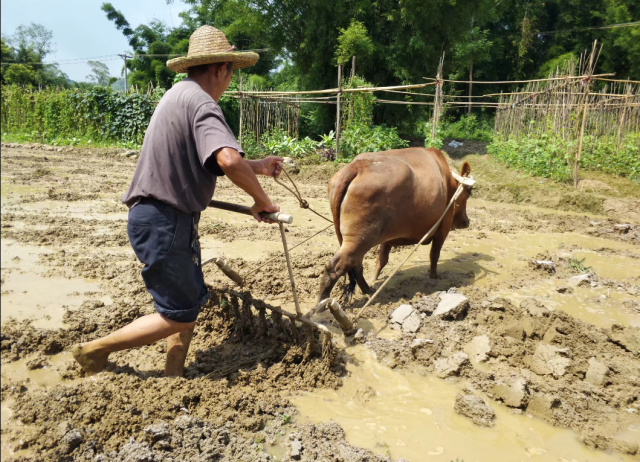
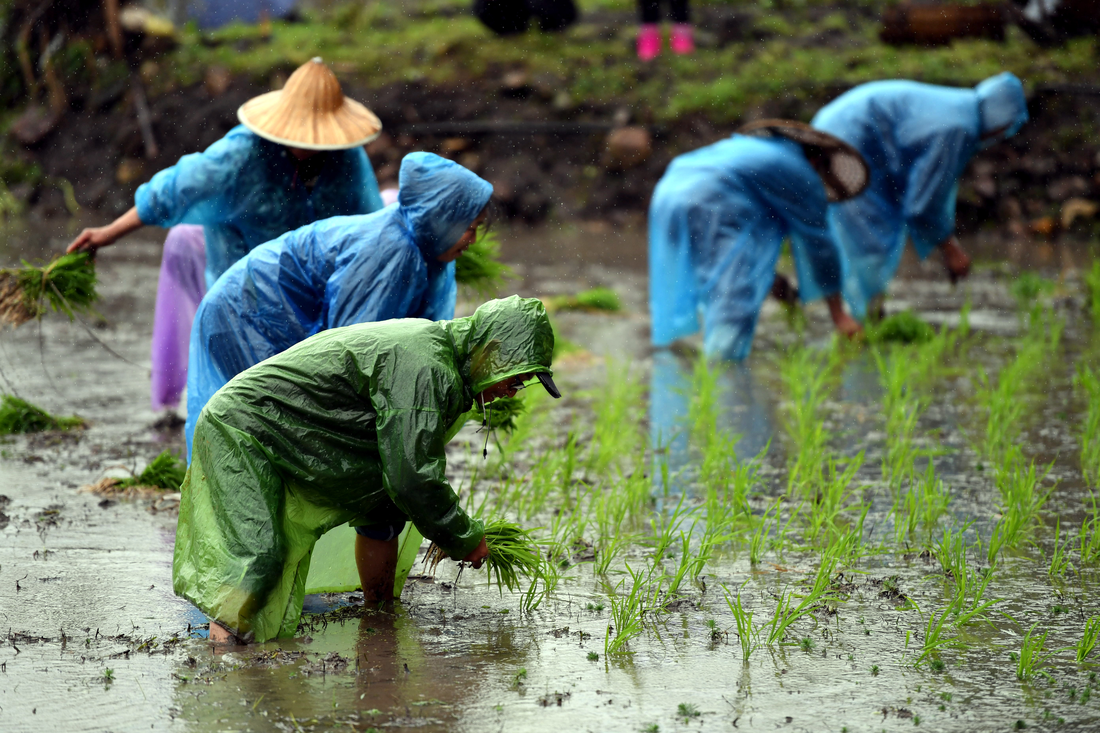
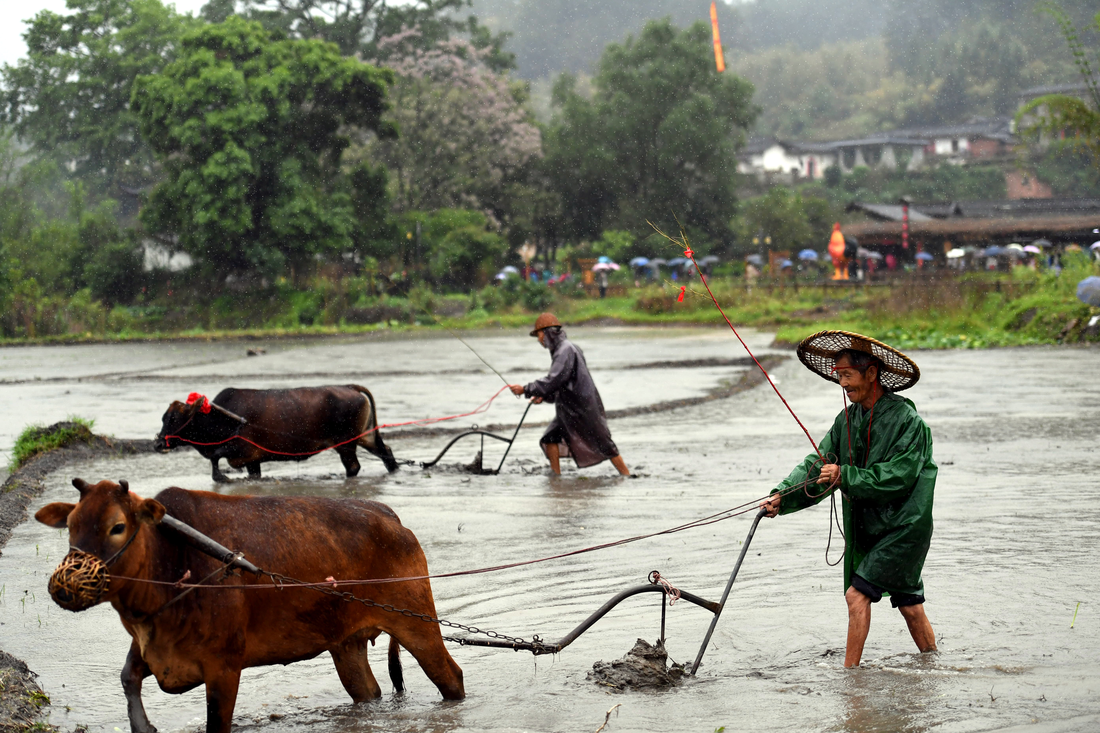
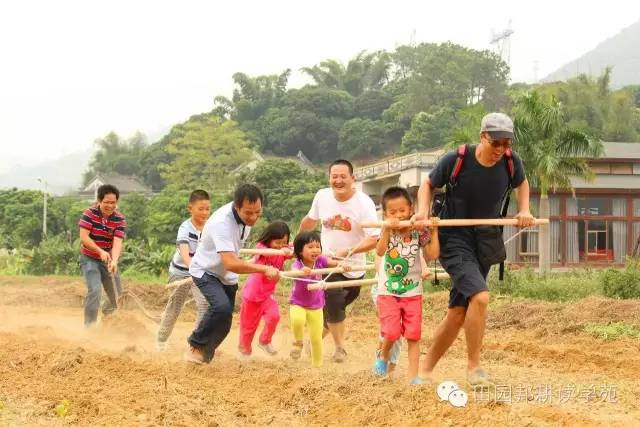
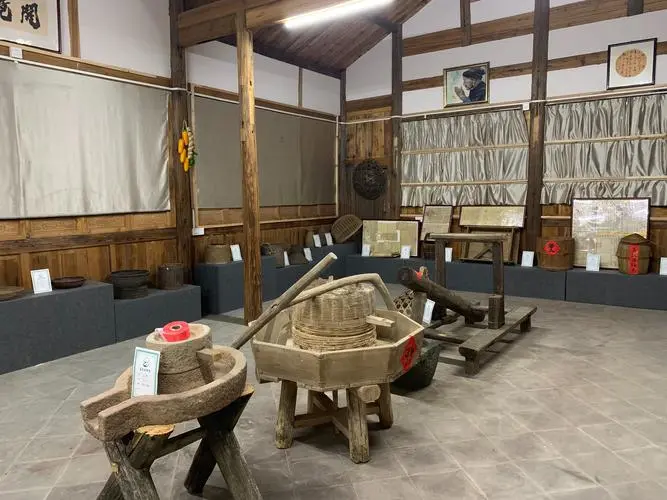
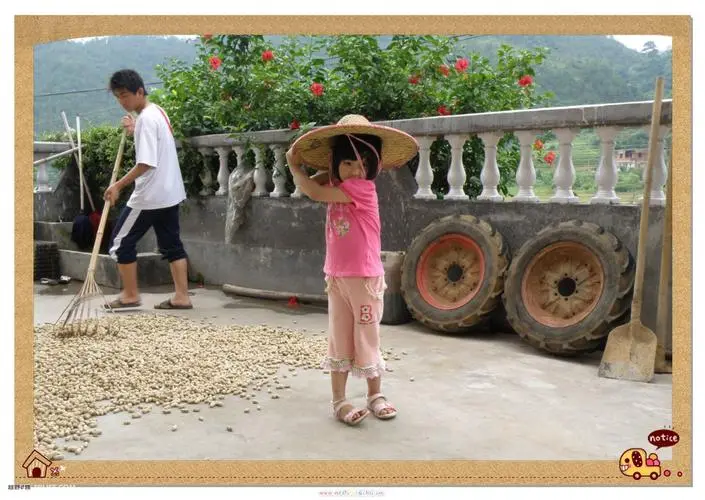
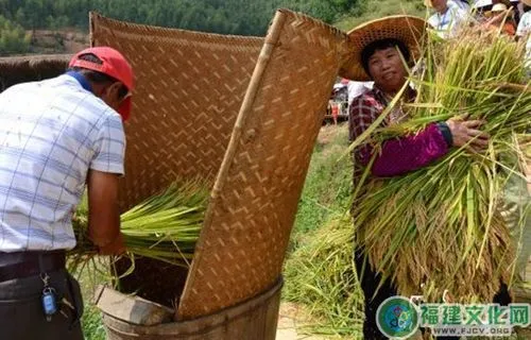
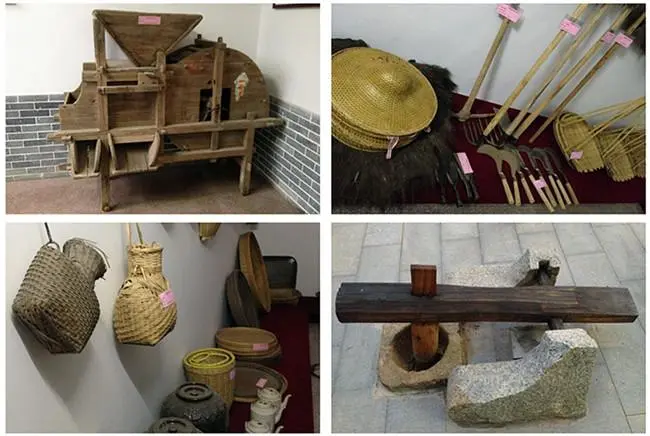
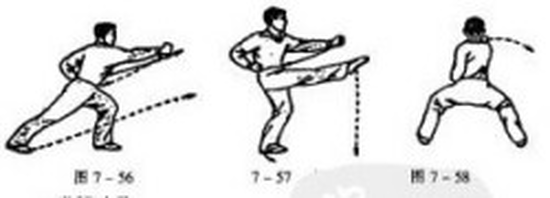
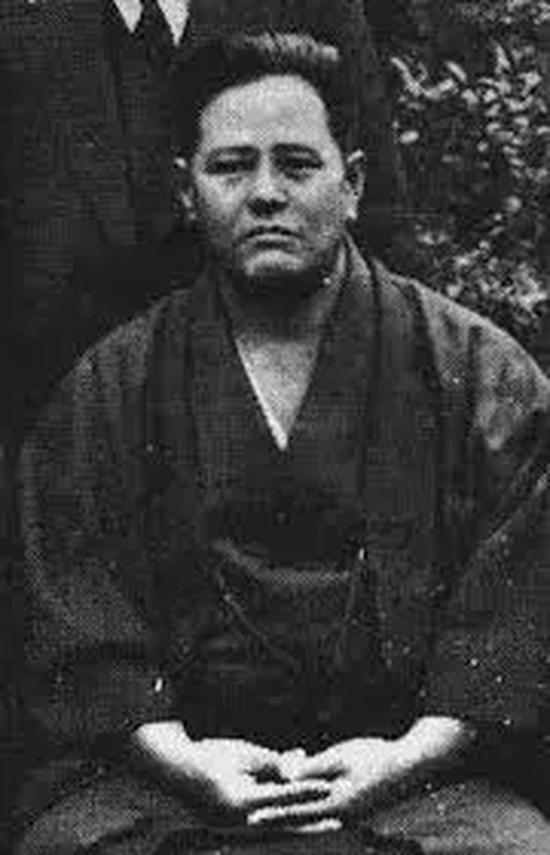
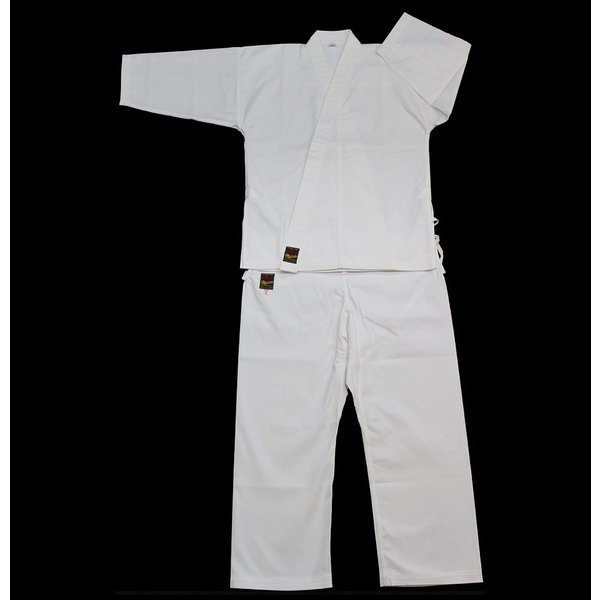
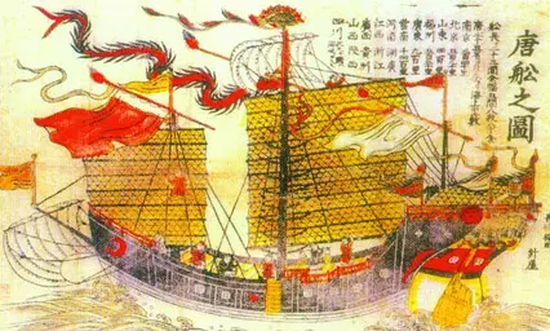
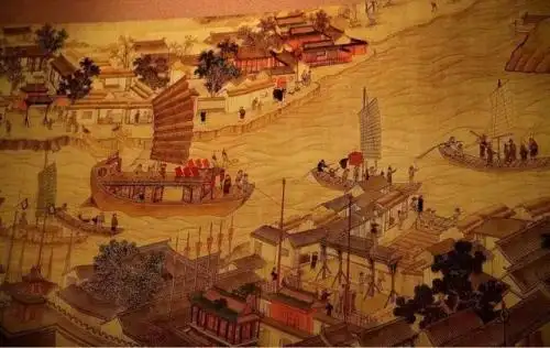
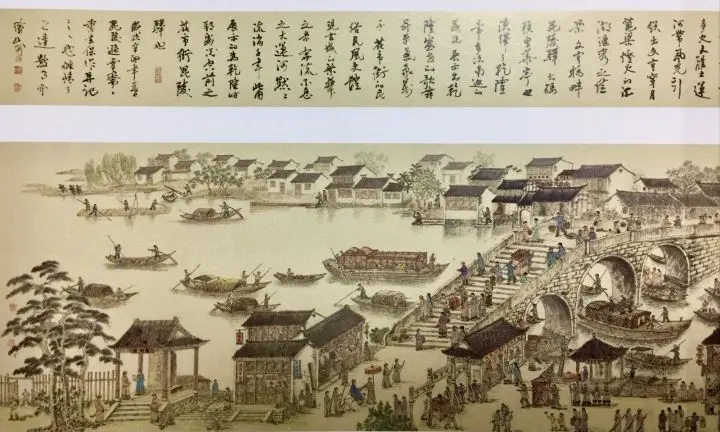
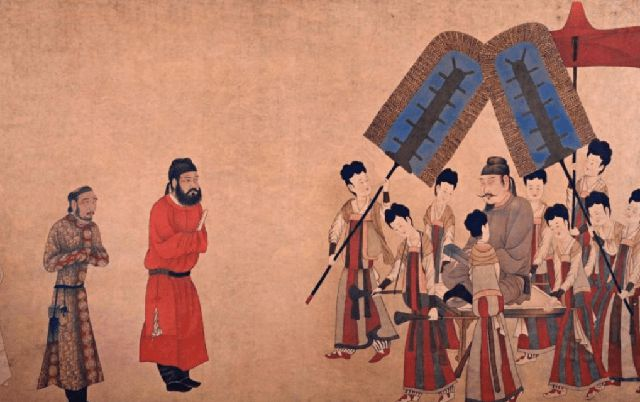
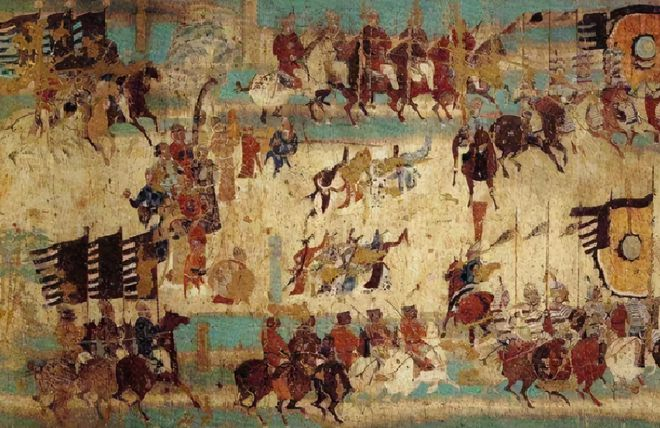
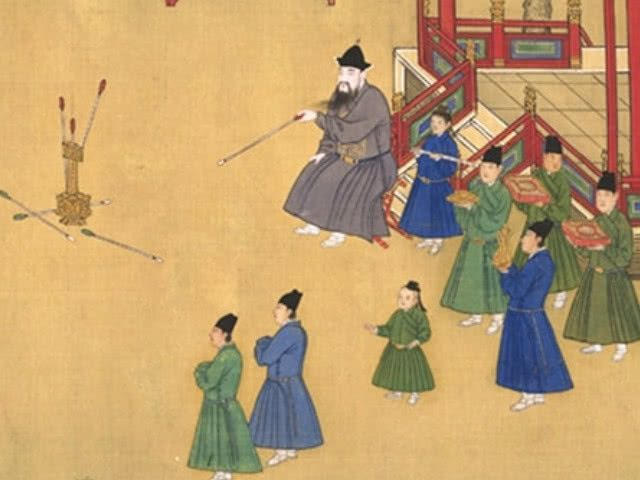
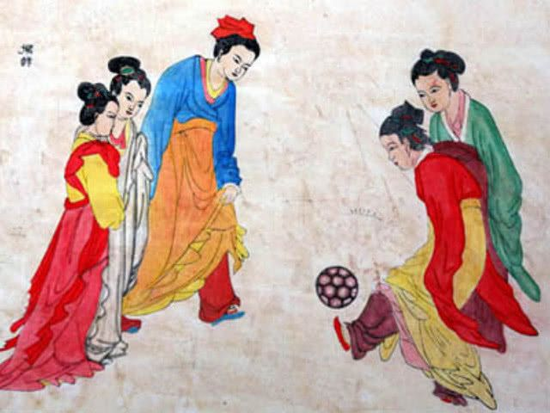
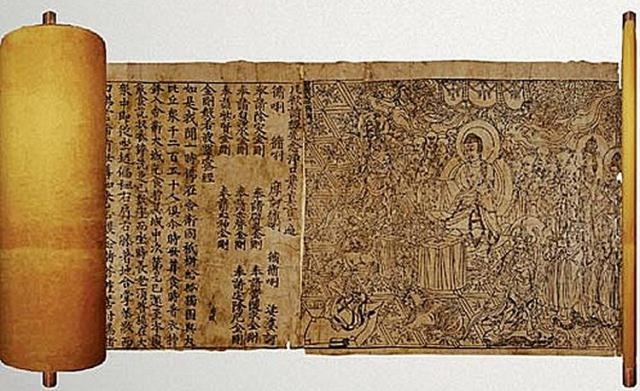
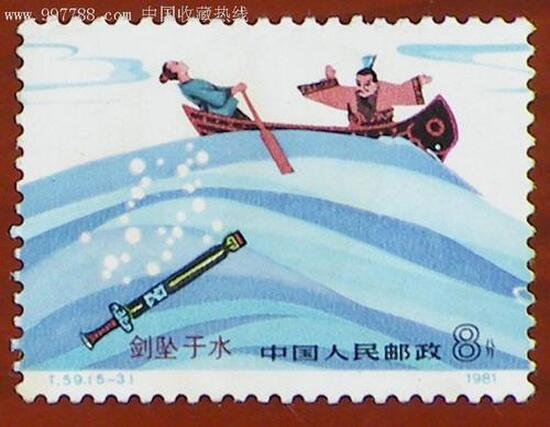
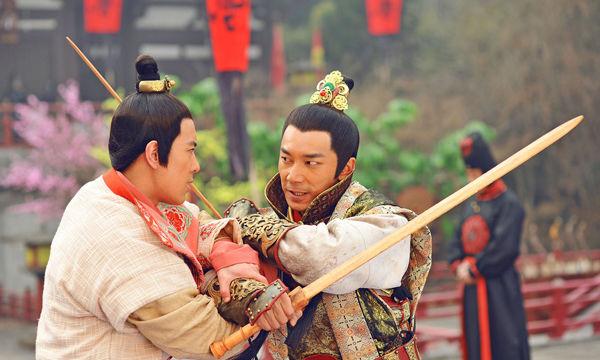
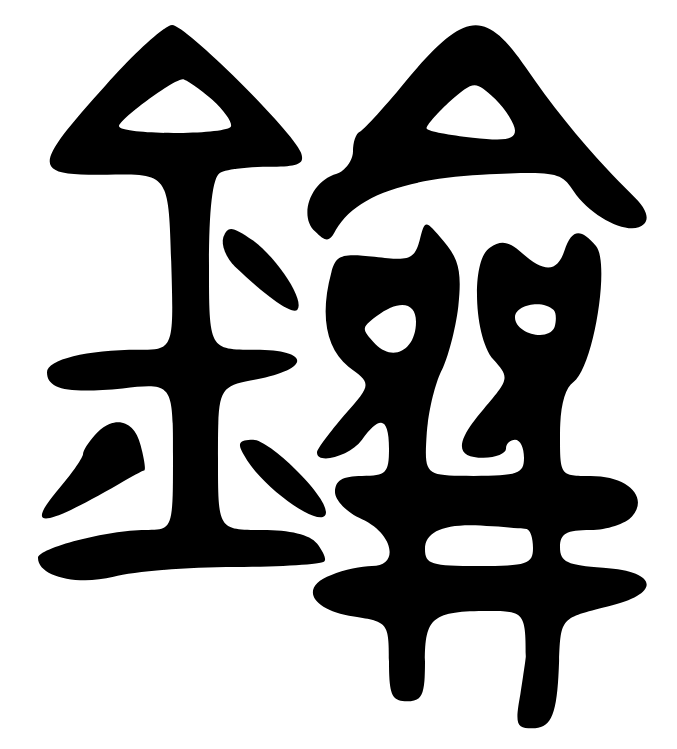
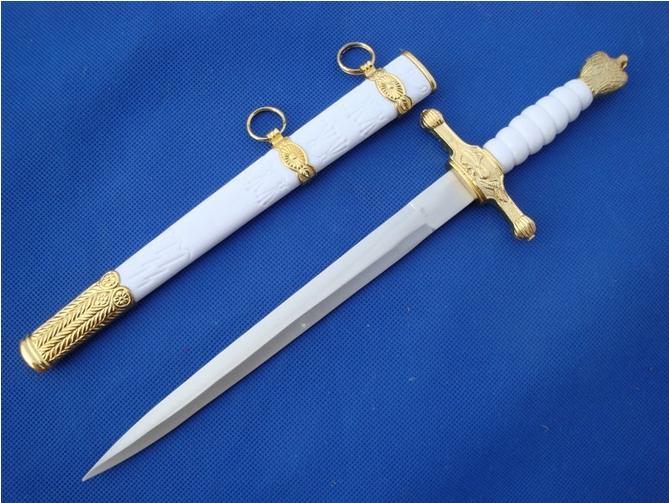
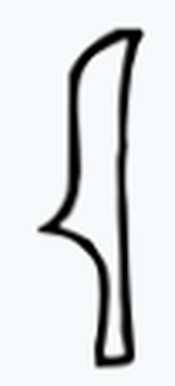
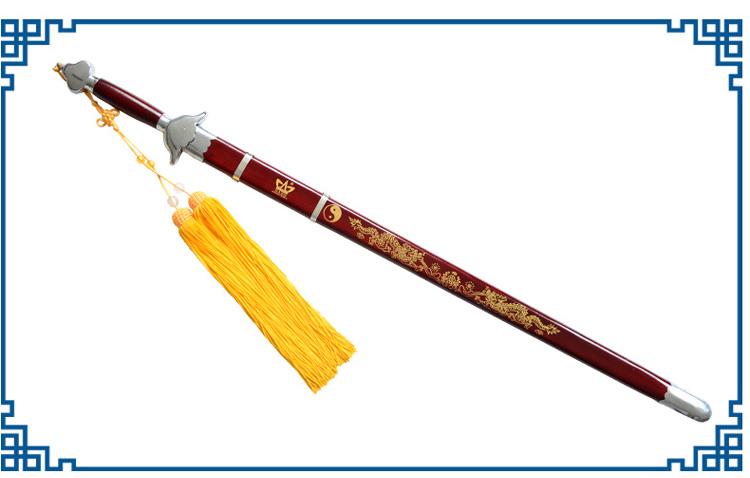
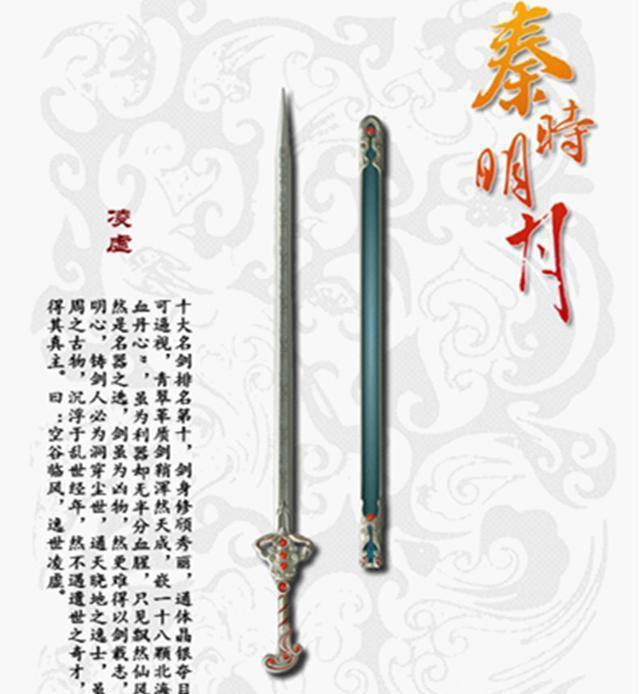
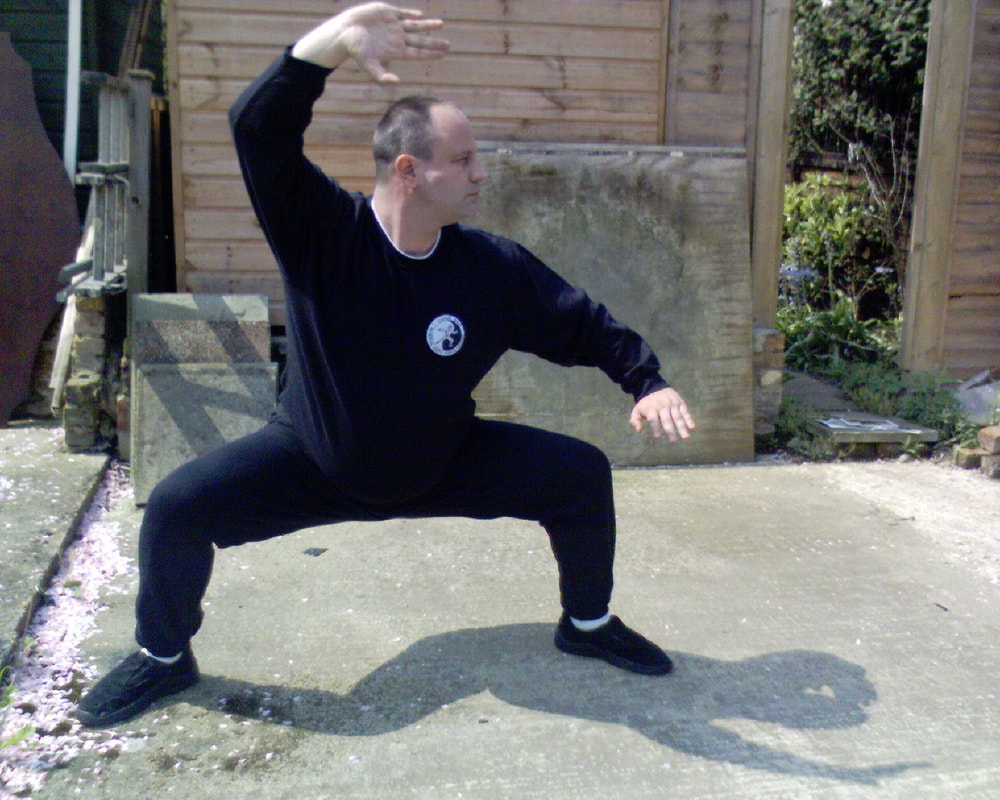
 RSS Feed
RSS Feed